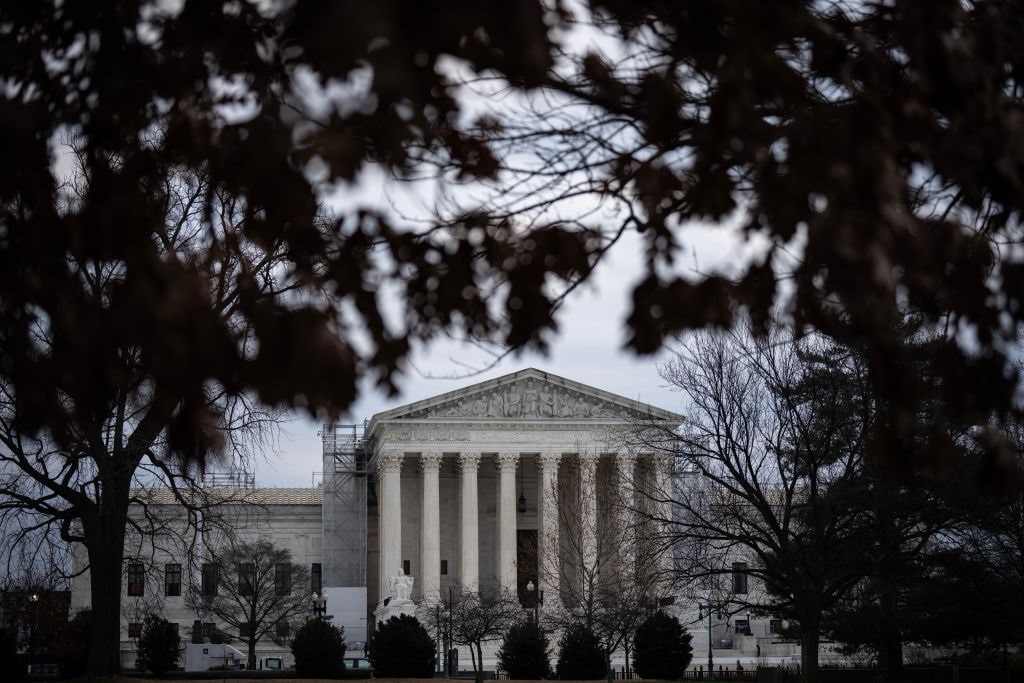
The Supreme Court heard arguments Wednesday, January 17, on pitting the little guy against big government. The cases challenge the “Chevron deference,” a decision shifting power away from courts toward executive agencies. It is a pillar of administrative law and one that small government and individual liberty advocates have been hopeful the Court will overturn. Oral arguments gave them no reason to expect a different result.
Supreme Court Shifts Power Balance
Chevron v. Natural Resources Defense Council is the name of the 1984 case now being revisited. It challenged a Clean Air Act law requiring lengthy, complicated, and costly EPA review of new sources of pollution. What counted as a new source? Was it one particular machine or component of a factory or a new factory? The Court ruled that when Congress passes laws with ambiguous language, it delegates interpretive power to the administrative agency. It was an odd 6-0 decision, described here by Columbia Law professor Thomas Merrill:
“Justices William Rehnquist and Thurgood Marshall were recused for health reasons, and Justice Sandra Day O’Connor was recused because of a financial interest in one of the parties. This left only Chief Justice Warren Burger and Justices William Brennan, Byron White, Lewis Powell, Harry Blackmun, and John Paul Stevens participating.”
This decision has become a “foundational precedent,” according to Solicitor General Elizabeth Prelogar. And it is hated by those skeptical of government power. Even if a court believes an agency interpretation of the law is wrong, it should rule in favor of the agency interpretation if the law is ambiguous. That may soon change.
Right-Wing Wrecking Crew
Justice Clarence Thomas has written critically of Chevron, and Justice Neil Gorsuch delivered a withering rebuke of the Chevron deference from the bench last year. He was at it again this week in pushing back Biden administration arguments delivered by Prelogar. She made the case that Chevron was valuable because it produced predictability and stability. Gorsuch pointed out that, far from bringing stability and reliability, the opposite was true. He said as the political winds blew in new administrations, instability resulted “because each new administration can come in and undo the work of a prior one.”
Gorsuch joked that both interpretations must be reasonable because the elected leaders directed them: “They’re all reasonable. I mean, my goodness, the American people elect them. Of course, they’re reasonable people.” Justice Brett Kavanaugh added: “The reality of how this works is Chevron itself ushers in shocks to the system every four or eight years when a new administration comes in, whether it’s communications law or securities law or competition law or environmental law, and goes from pillar to post …”
There are two plaintiff names for this single issue, with Loper Bright Enterprises and Relentless, Inc. suing Secretary of Commerce Gina Raimondo. The Supreme Court merged the cases to answer a single question:
“Whether the Court should overrule Chevron or at least clarify that statutory silence concerning controversial powers expressly but narrowly granted elsewhere in the statute does not constitute an ambiguity requiring deference to the agency.”
The common perception is that judges on the right oppose Chevron while those on the left favor it. None of the colloquies by left-bloc Justices Elena Kagan, Sonia Sotomayor, or Ketanji Jackson led the audience to believe they would support overturning Chevron. They seem to be in the “mend it, don’t end it” camp if they agree it needs changing. Will there be five votes to cancel this precedent? The Court is expected to issue a ruling by June.
No comments:
Post a Comment